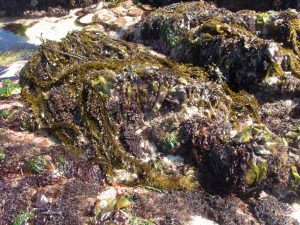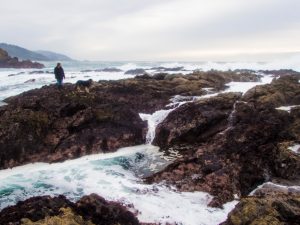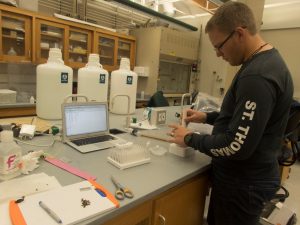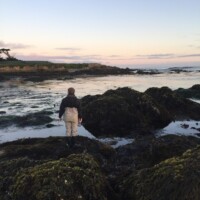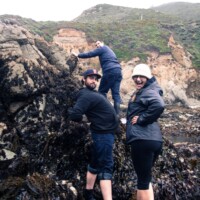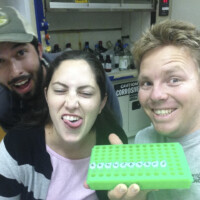Physiological effects of nitrate, light, and intertidal position on the red seaweeds Mazzaella flaccida and Mazzaella splendens
A Thesis Defense by Stephan A. Bitterwolf
Friday, November 3rd at 12pm
MLML Seminar Room
Thesis Abstract:
California’s intertidal seaweeds Mazzaella flaccida and Mazzaella splendens reside in different intertidal zones. The yellow-green M. flaccida is found in the high- and mid-intertidal, while the brown-purple M. splendens is found in the mid- and low-intertidal. These differences in intertidal position and blade color, in addition to minute differences in morphology, are typically used to differentiate these species in the field. However, a reciprocal transplant study by Foster (1982) found that, not only can M. flaccida and M. splendens reside in each other’s zone, but the color of M. splendens can change to the yellow-green of M. flaccida. Thus, Foster (1982) suggested that these two species may be conspecifics. Presently, genetic evidence supports the separation of both species, however, little progress has been made towards determining the cause, mechanism, and impact of this chromatic plasticity on thallus physiology. The present study serves to further our understanding of this chromatic plasticity in Mazzaella through a series of field and laboratory experiments. In the field experiment, 360 individuals (180 of each species, 90 controls and 90 experimental) were reciprocally transplanted within the intertidal zones of 3 central California sites. Thereafter, transplants were monitored monthly from June – October for blade size and presence. In October, all transplants were removed for pigment analysis. In the laboratory experiments pigment concentrations of both species were quantified from seaweeds cultured in reduced or replete irradiances and nitrate concentrations. Differences in blade size, pigment composition, and survival between site, intertidal zone, species, and culture treatment were investigated with 2-way ANOVAs and non-parametric tests. In these experiments: (1) greening was documented only for seaweeds in the culture experiments, (2) survival was greatest in the low intertidal zone, (3) high intertidal seaweeds contained greater photoprotective pigment content, (4) M. flaccida exhibited increased capacity to regulate photoprotective pigments, and 5) M. splendens exhibited increased capacity of phycobilin pigments. The results of this study illustrate how these intertidal seaweeds can survive adverse conditions such as nutrient limitation or increased light stress/desiccation by cannibalizing phycobiliproteins and increasing photoprotective pigments. The differing extent of each species to regulate photoprotective and phycobilin pigments supports their current classification as separate species.
Acknowledgements from Stephan: This work would not have been possible without the support I received from mentors, labmates, students, family, and friends. Thanks all :D!
Funding: NSF GRFP, Myers Trust, and MLML Wave.
CDFW Permit: #13419


